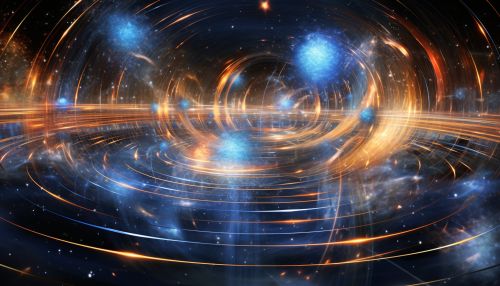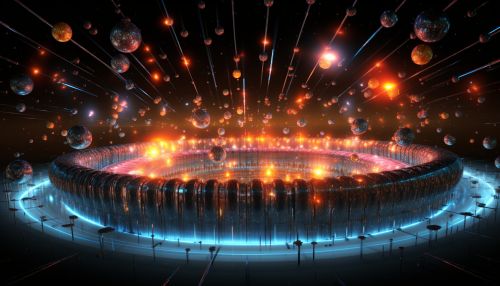The Physics of the Higgs Boson
Introduction
The Higgs boson is an elementary particle in the Standard Model of particle physics produced by the quantum excitation of the Higgs field, one of the fields in particle physics theory. It is named after physicist Peter Higgs, who in 1964, along with five other scientists, proposed the Higgs mechanism to explain why particles have mass. This mechanism implies the existence of the Higgs boson.


Discovery
The discovery of the Higgs boson was announced in 2012 by the CERN (European Organization for Nuclear Research) based on collisions in the Large Hadron Collider (LHC). The discovery has been called "monumental" because it appears to confirm the existence of the Higgs field, which is pivotal for the Standard Model and the theory of how other elementary particles acquire properties such as mass.
Properties
The Higgs boson is an excitation state of the Higgs field, which permeates space and gives other particles their mass. The boson itself is massive, having a measured mass of about 125 giga-electronvolts (GeV), or about 133 times the mass of a proton. The Higgs field and the Higgs boson are key components of the Higgs mechanism.


Higgs Mechanism
The Higgs mechanism is a process by which vector bosons gain mass. The mechanism proposes a field permeating space, known as the Higgs field, and suggests that particles acquire mass by interacting with this field. The Higgs boson is a quantized manifestation of this field.
Significance in the Standard Model
The Higgs boson is a cornerstone of the Standard Model of particle physics, which describes three of the four known fundamental forces in the universe, as well as classifying all known elementary particles. The existence of the Higgs boson and the associated Higgs field explains why the other elementary particles in the Standard Model have mass.


Experimental Observation
The Higgs boson cannot be observed directly because it is highly unstable and decays into other particles immediately after being produced in high-energy collisions, such as those involving protons in the LHC. However, these decay products can be detected and used to infer the presence of the Higgs boson.
Future Research
The discovery of the Higgs boson opens up new avenues for research in particle physics. Future experiments will continue to study the properties of the Higgs boson and its role in the universe.
